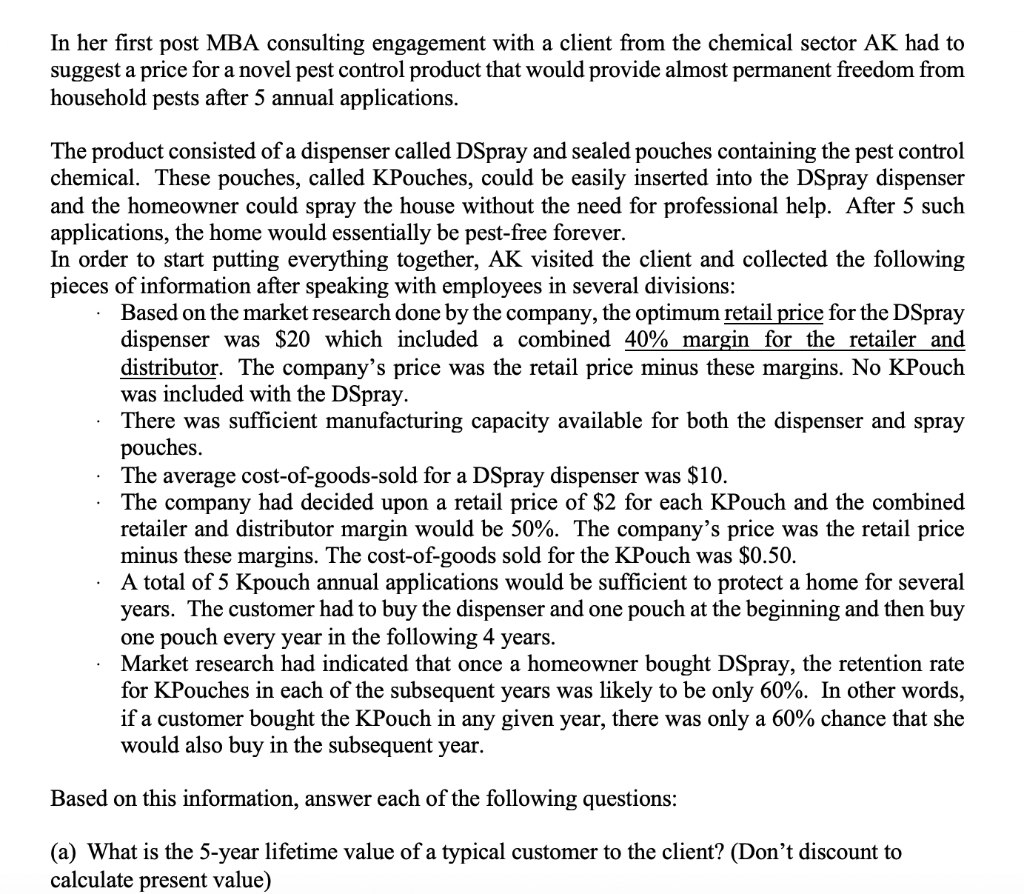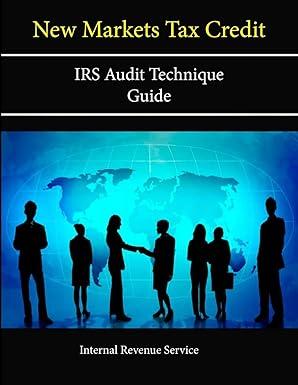
In her first post MBA consulting engagement with a client from the chemical sector AK had to suggest a price for a novel pest control product that would provide almost permanent freedom from household pests after 5 annual applications. The product consisted of a dispenser called DSpray and sealed pouches containing the pest control chemical. These pouches, called KPouches, could be easily inserted into the DSpray dispenser and the homeowner could spray the house without the need for professional help. After 5 such applications, the home would essentially be pest-free forever. In order to start putting everything together, AK visited the client and collected the following pieces of information after speaking with employees in several divisions: Based on the market research done by the company, the optimum retail price for the DSpray dispenser was $20 which included a combined 40% margin for the retailer and distributor. The company's price was the retail price minus these margins. No KPouch was included with the DSpray. There was sufficient manufacturing capacity available for both the dispenser and spray pouches. The average cost-of-goods-sold for a DSpray dispenser was $10. The company had decided upon a retail price of $2 for each KPouch and the combined retailer and distributor margin would be 50%. The company's price was the retail price minus these margins. The cost-of-goods sold for the KPouch was $0.50. A total of 5 Kpouch annual applications would be sufficient to protect a home for several years. The customer had to buy the dispenser and one pouch at the beginning and then buy one pouch every year in the following 4 years. Market research had indicated that once a homeowner bought DSpray, the retention rate for KPouches in each of the subsequent years was likely to be only 60%. In other words, if a customer bought the KPouch in any given year, there was only a 60% chance that she would also buy in the subsequent year. Based on this information, answer each of the following questions: (a) What is the 5-year lifetime value of a typical customer to the client? (Don't discount to calculate present value) In her first post MBA consulting engagement with a client from the chemical sector AK had to suggest a price for a novel pest control product that would provide almost permanent freedom from household pests after 5 annual applications. The product consisted of a dispenser called DSpray and sealed pouches containing the pest control chemical. These pouches, called KPouches, could be easily inserted into the DSpray dispenser and the homeowner could spray the house without the need for professional help. After 5 such applications, the home would essentially be pest-free forever. In order to start putting everything together, AK visited the client and collected the following pieces of information after speaking with employees in several divisions: Based on the market research done by the company, the optimum retail price for the DSpray dispenser was $20 which included a combined 40% margin for the retailer and distributor. The company's price was the retail price minus these margins. No KPouch was included with the DSpray. There was sufficient manufacturing capacity available for both the dispenser and spray pouches. The average cost-of-goods-sold for a DSpray dispenser was $10. The company had decided upon a retail price of $2 for each KPouch and the combined retailer and distributor margin would be 50%. The company's price was the retail price minus these margins. The cost-of-goods sold for the KPouch was $0.50. A total of 5 Kpouch annual applications would be sufficient to protect a home for several years. The customer had to buy the dispenser and one pouch at the beginning and then buy one pouch every year in the following 4 years. Market research had indicated that once a homeowner bought DSpray, the retention rate for KPouches in each of the subsequent years was likely to be only 60%. In other words, if a customer bought the KPouch in any given year, there was only a 60% chance that she would also buy in the subsequent year. Based on this information, answer each of the following questions: (a) What is the 5-year lifetime value of a typical customer to the client? (Don't discount to calculate present value)







